- Home
- Michael White
Travels in Vermeer Page 3
Travels in Vermeer Read online
Page 3
(The Metropolitan Museum of Art)
A Maid Asleep (c. 1656–1657)
Young Woman with a Water Pitcher (c. 1664–1665)
Study of a Young Woman (c. 1665–1674)
Woman with a Lute (c. 1662–1664)
Allegory of Faith (c. 1670–1674)
LONDON
(The Kenwood House)
The Guitar Player (c. 1670–1672)
(The Royal Collection)
The Music Lesson (c. 1662–1664)
(The National Gallery)
A Lady Standing at a Virginal (c. 1670–1673)
A Lady Seated at a Virginal (c. 1670–1675)
6. The Toast
Early evening: I clatter up to my hotel and, in the alley, lock my black bike to a handy railing. Inside, my room is fresh and cool because I have left the windows open all day. A relaxed café buzz wafts in, through the billowing curtains, up from the canal-front streets below. I unload my backpack onto my bed. I’ve stopped at the Aelbert Cuyp street-market on the way home and filled my panniers at the fish-stalls and cheese-stalls. A wedge of smoky Gouda; a round of Leiden peppered with cumin seeds; a whole smoked herring wrapped in butcher-paper; a jar of brine-cured, purplish Calamata olives; two shriveled Italian salamis; a crusty loaf in its brown paper sleeve; a few Sanguineli oranges; a small box of Belgian chocolates wrapped in golden foil. I arrange all this on the tiny, round pedestal table next to the open window. I raise a glass of mineral water to the Amsterdam skyline, and then saw into the hard cheeses and pungent, wild boar salamis as best I can with a sterling butter knife. I’m famished; I tear the rinds with my teeth, can’t get enough.
Later, after a hot shower, I wipe a clearing in the mirror and take a long look. I’d like to say I see my father’s son, the handsome sailor, hiding beneath this grizzled forehead with eyes askew, this crooked and dented nose, but I don’t. It’s just a middle-aged guy, a recovering drunk, who looks look pretty tired and old. Still, as if a broken heart were something like a hangover, I try to focus myself. I pick up the bottle of Lexapro, unscrew the cap, and pour the contents into the toilet.
THE HAGUE AND DELFT
[ June ]
1. The Girl
Another turbulent red-eye flight to Schiphol, and once again, I haven’t slept. The countryside steams by in the sun as I roll seaward in a sunflower-yellow local train, past the ungainly windmills, flooded polders, village after village. Past sheep and goats and swans and geese. It’s green-gold June. I’ve been reading travel books in preparation for my return. Watching the vista unspool with its relentless flatness—the view unimpeded in every direction and dwarfed by the towering sky above—I understand why there are four Dutch nouns for horizon, although I can’t recall them now. A second later, I realize I’ve missed the tulip season by a couple of weeks. Empty field after empty field files past, precisely measured and orderly.
One month ago my father passed away. Back in Missouri, on his way to church one afternoon, he was T-boned by a young man driving a big F-250. Nothing I could do, the young man said. My father remained in a coma for several days and never regained consciousness. His sons and daughters, all five of us, gathered at his bedside and made a difficult decision on his behalf. Faced with another hard loss without respite, all I can decide to do is press on with Vermeer.
In The Hague Central, I slide the handle out of my bag and wheel outside—past the happy couples checking their iPhones, looking for cabs—without the vaguest notion of where I’m going. I’ve only bumped along a few blocks, toward what seems the center of things, when I make out a two-story banner, draped down a building just across a square: an immense reproduction of The Girl with a Pearl Earring.
Night after night in my armchair, with art books or Vermeer studies open in my lap, I had looked at her face, the color plates cool beneath my fingertips. How odd it is to suddenly see her looming as big as a cloud above the treetops, the face I had dreamed of, that had lingered in my mind for weeks, like the Cheshire Cat. My path couldn’t have been more direct, over the ocean and through the streets, and suddenly here I am. I’m raw, as expectant as a pilgrim.
The Mauritshuis (the Dutch Royal Gallery) houses two of Vermeer’s masterpieces, The Girl with a Pearl Earring and View of Delft, as well as an example of his juvenilia, the Italianate Diana and Her Companions. Much to my delight, it happens that one other masterpiece, not on my itinerary, is on loan from Vienna for one more day: his great studio scene, The Art of Painting.
I’m on my way to see Vermeer, floating up the red-carpeted stairs, in this high-ceilinged palace. Just before entering the Vermeer room, something catches my eye, just to the left of the oak doorframe. It’s Carel Fabritius’s trompe-l’oeil miniature, The Goldfinch, which I recognize from my reading (and which has not yet been made world-famous by Donna Tartt’s novel of the same name). It’s a painting of a domesticated goldfinch on an elaborate perch attached to a whitewashed wall, and the contrast between the off-center, startlingly realized bird and the softly glowing wall behind is striking. Fabritius was Rembrandt’s student, and was later Vermeer’s friend and/or mentor in Delft. Almost all of Fabritius’s paintings were lost in the Delft Thunderclap of 1654, when a gunpowder explosion leveled much of the city. But The Goldfinch, especially—with its naturalism, cool sunlight, white backdrop, grittiness and ordinariness—seems essential to Vermeer. It’s a prelude, a source for the poetry of Vermeer’s solitary women.
Going into the room, the walls are a muted and patterned green—the light, which comes from the right as you walk in, is shuttered, the effect subaqueous. There’s one painting on each wall. Vermeer’s great landscape, View of Delft, is alone on the left wall, as luminous as a torch. But I also feel a breeze, a shiver on my back as I enter, causing me to turn to face The Girl with a Pearl Earring, to the right of the doorway. I look at her across my left shoulder. She is looking me dead in the eye across her own left shoulder. She is, if any painting ever can be, a breathtaking encounter.
Love: How could I have forgotten that feeling? The instantaneous, passionate gaze that comprehends me, beyond accusation or forgiveness. The lovely sympathy in her hazel irises, the lush eroticism of her lips, her mouth. She is the clapper, I am the bell, and she rings through my whole body.
2. The Earring
I look up, blink. A ray of sunlight has slipped through the shutters, fallen at my feet. Maybe a half-hour, maybe an hour has passed.
Nothing could’ve prepared me for the painting’s hold on me. I’ve read about the sitter, who was probably Vermeer’s daughter Maria, aged twelve or thirteen at the time, and I know the painting isn’t a portrait, but is purposefully fantastical. I’ve read and reread the brilliant passages on this work by critics Lawrence Gowing and Edward Snow. But I hadn’t expected this deep dream, this first and last love. It’s all I can do to return her gaze.
The painting is much smaller than I’d expected: only about fifteen inches wide and eighteen inches tall. The badly abraded background—originally a deep, translucent green—is blackish, amorphous nothingness. Over the centuries, a fine eggshell craqueleur has developed across the entire surface and is far more extensive than you’d imagine from the digitized photos. I’m not sure these changes should even be regretted; the essence of the girl projected through the cracked, eroded surface seems undiminished. In fact, she seems all the more moving to me, all the more precious for her ability to transcend the ravages of age. Reproductions are useless, I suddenly think.
Directly across the room, The Art of Painting casts its own eerily magnetic spell. It is an enormous and deep studio scene depicting a seated painter’s back (often considered a stand-in for Vermeer), as he, the painter, begins a painting of a smiling girl, who is standing in the flow of light, beyond and to the left. The model for the girl was probably the same as for The Girl with a Pearl Earring. She is fresh and pretty, with youthful, wide-set eyes. The painting is among the most allegorical of all Vermeer’s works, which are seldom allegorical. The gir
l, wearing a laurel crown, represents Clio, goddess of history. The seated painter gazes at his comely model, his right hand sketching a few leaves from her wreath on his canvas. She doesn’t return his attention, but gazes down mysteriously toward a white mask lying face-up on the table before her. The corner of the table points back toward the painter, nearly touches his hip. Looking into the depths of this painting is a little like gazing into a swirling snow globe, a self-sufficient cosmos.
Hanging on the rear wall in the painting is a large map of Holland, the most detailed of all of Vermeer’s glorious maps, with truly photographic fidelity, complete with a convincing, dramatic crease that roughly corresponds to the North/South political split in the Netherlands. In between the wall and the viewer is indeterminate space. The shimmering, golden chandelier at top appears at first glance to be rendered in marvelously fine detail, but when I actually look at it, it is all highlight and shadow—heavy brush-strokes of cream defining sunlit surfaces—and little else.
I turn and look again at the earring in the painting of the girl behind me—that most celebrated detail—two spherical daubs of paint. One bright brush mark along the left-hand curve of the pearl reflects direct sunlight; and a fainter stroke (only recently revealed in cleaning) follows the bottom curve, and seems to be radiant light from her white collar. The body of the pearl filled in by desire, by dream—my desire, my dream.
3. Luminosity
Vermeer died abruptly in 1675, when he was forty-three and penniless, due to the collapsed art market. Catharina, his widow, described his death as follows: “As a result and owing to the great burden of his children, having no means of his own, he had lapsed into such decay and decadence, which he had so taken to heart that, as if he had fallen into a frenzy, in a day or day and a half had gone from being healthy to being dead.”
It’s difficult to know for certain what to make of that cryptic statement. But hard times were upon the Dutch, at war yet again, and the art market had evaporated in the widespread panic. As a result, Vermeer couldn’t feed his large family—his wife and their eleven children— and when he died, he left them bankrupt. It’s known that he kept The Art of Painting at home to the end, alone among all his works. Then, after the bankruptcy, Catharina faithfully attempted to safeguard the masterpiece from creditors by transferring ownership to her mother. However, it seems to have been sold at auction soon thereafter.
If The Art of Painting is a high water mark among Vermeer’s interior scenes, View of Delft is anomalous. Without moving from my spot, I pivot left again, toward the View. As the only real landscape, it’s an exception within a uniquely focused career, and absolutely shines in this room.
The high, swept sky, with its shadowy threat in the first bank of clouds above us and a brilliant whiteness of cirrus beyond, registers distance in brighter and brighter drifts of cloud above the North Sea. This big sky is dully mirrored in the bronze-green waters of the Schie, and it dazzles the eye with passages of distilled brilliance and my mind with memories of such brilliance. I hunch my shoulders; I even squint a little. Although facing a shuttered window in the wall directly across from it, the painting radiates; it is the light-source inside this physical space.
Beyond the radiance of the composition, I’m struck by the thickness of the paint. The clouds are laid in with the same heavy impasto technique Vermeer used for some of the whitewashed walls in his interiors, and for the face of The Milkmaid. The lead-white pigment of the period was unusually coarse (and prized for its coarseness), its grainy texture gathering points of reflected light. Vermeer also sometimes mixed sand into the paint (especially in the earlier work) to create texture and luminosity. Some highlights—like the bright yellow hue that adorns gables and walls in the townscape—are so built up, they glitter like a papier-mâché school project. The vision is lovingly layered and hewn, and it’s even more startling to us now, accustomed as we are to processed paints and pigments. Marcel Proust’s In Search of Lost Time famously and enigmatically includes a passage about a “little patch of yellow wall” somewhere in this painting, like a “priceless specimen of Chinese art,” which is the last thing the writer Bergotte looks at before he dies. No one knows for sure which patch of paint Proust meant.
And then there’s the lovely, vaguely lonely feel of the town itself. The painting is composed of several bands: sky and city and water. The sky is the largest of these; beneath the sky is the narrow strip of city; then the bronze-green Kolk. And in the left foreground, on our side, there’s part of the riverbank at our feet, with a moored ferry and several people. Two women stand off on their own, talking. They’re wearing peasant dresses, black with white collars. One holds a basket.
What we see of the town, across the water, is mostly waterfront— the outer walls and gates with rooftops and towers above—and in the center glows one particular sunlit fold of buildings. We’re actually looking across the Schie, straight up the mouth of the main canal that divides, just after the bridge, to become Delft’s principal arteries, the Oude Delft and the Nieuwe Delft. I can make out the bridge, the city wall, two entrances on the southern end—the Rotterdam Gate and the Schiedam Gate—and then, beyond, a slice of the interior: a couple of steeples and roofs, and not much else. The scene is gorgeously, fervently colored—blood-red roofs on the left, deep ochre on the right—passionate, yet thoroughly bourgeois. The Nieuwe Kerk steeple is sculpted in startlingly heavy impasto. A tiny clock on the Schiedam Gate reads a few minutes past seven. There are fifteen (tiny) human figures in the painting, I’ve read, but it looks almost empty to me.
The nearer parts of the town are shadowed by the storm clouds directly above, but there’s a clearing behind the darkness where a ray of sun breaks through. I can’t see this ray itself, only its effect on the sunlit interior of the painting. The Nieuwe Kerk steeple is fully, perhaps symbolically lit—it’s the brightest spot—probably because William of Orange is buried there. This great national hero, who led the Dutch revolt against the occupying Spanish, was assassinated in 1584. Vermeer’s spotlighting of the Nieuwe Kerk, then, was a patriotic homage, which wouldn’t be missed by any Dutch eye. Most striking to me, however, is the simple fact, the feeling, of the sunlit center. I sense the stir of human activity (the Nieuwe Kerk is on the market square), the day about to begin, the blessing of light. The town is neither idealized nor abstracted, neither larger nor smaller than it needs to be, and one cannot know what God thinks about it.
The waters of the Schie were widened, in 1614, into a triangular harbor called the Kolk. Some experts think the standpoint for View of Delft was the upper floor of a house, long gone, that stood on the bank. There, at his leisure, Vermeer would have set up his camera obscura, which would cast its image either onto a wall or into a darkened box. This image could then be directly transcribed, and worked into a painting later.
These optical details fascinate us now; originality and “authenticity” are special concerns of our age. Would we look differently on the Mona Lisa if we learned that she hadn’t been painted from nature, but traced from a projected image? Perhaps. In any case, David Hockney and Philip Steadman have argued that Vermeer used a camera as a matter of course, that he probably learned about optics from his peer Antony van Leeuwenhoek, the self-taught Delft scientist and inventor of the microscope. Steadman’s main purpose, in his book Vermeer’s Camera, is to show that some of Vermeer’s compositions must have been created by optical means. There’s really no other plausible explanation for the accuracy of detail, he argues, for the way such infinitesimally complex tile patterns, for instance, continue uninterruptedly on either side of a table or chair.
And View of Delft, with its luminous clarity, does imply the use of a camera, or some such setup in the house across the Kolk. The townscape is abruptly “cropped” on the sides, an effect that would have been quite shocking then. This cropping would make sense if, and perhaps only if, Vermeer’s compositions had been framed by a lens.
And then there’s the effect often ca
lled “circles of confusion,” or pointillés: spherical daubs of luminous paint. These highlights resemble the optical effects produced by a lens, especially by the imperfect, hand-ground lenses of the day. For example, on the right-hand side of the canvas, across the Schie, there are two herring boats moored for repairs. In an otherwise meticulously realistic scene, the pointillés are pure poetic embellishment—scattered flakes of gold that follow the shadowy contours of the hulls, the seams of the planking, the gunwales. They are strewn lavishly through shadows and luminous areas alike, and the eye simply accepts their presence. Vermeer’s most penetrating critic, Lawrence Gowing, describes this phenomenon as a glittering “commentary of light.”
Another peculiar decision that Vermeer makes in his signature landscape involves perspective. He places the largest possible body of water between himself and his subject. He chooses distance; he makes what is most familiar to him unfamiliar. He portrays the Kolk—a significant harbor in the seventeenth-century—early in the morning, and nearly vacant. This reminds me of Wordsworth’s sublime but slightly strained sonnet “Composed Upon Westminster Bridge, September 3, 1802,” which describes smoke-choked nineteenth-century London with an oddly pastoral rhetoric: “This City now doth, like a garment, wear / The beauty of the morning; silent, bare …” Both artists show us their cities in the best possible light, but they have to get up pretty early to do so.
But is the essence remoteness or unknowability? There’s nothing remote about The Girl with a Pearl Earring—the exquisite maid who stands frozen, Eurydice-like, in a welter of conflicting passions. She couldn’t stand any closer to me; her clear gaze couldn’t seize me more directly.
Whether she’s turning toward or away from me, though, I don’t know. Impossible to know whether she’s turning toward or away from the nothingness behind her.

 Paul McCartney's Coat
Paul McCartney's Coat The Cat Is Back!
The Cat Is Back!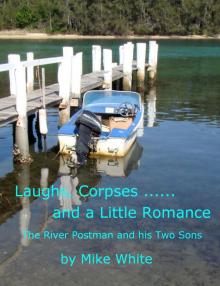 Laughs, Corpses... and a Little Romance
Laughs, Corpses... and a Little Romance The Waiting Room
The Waiting Room Into the Light- Lost in Translation
Into the Light- Lost in Translation Six of the Best
Six of the Best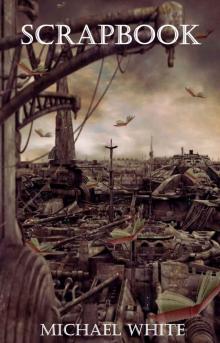 Scrapbook
Scrapbook Bob the Balloon, Al Capone and the Two Bob Bouncer
Bob the Balloon, Al Capone and the Two Bob Bouncer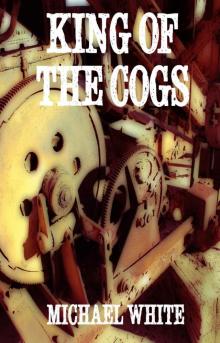 The King of the Cogs
The King of the Cogs A Bad Case of Sigbins
A Bad Case of Sigbins To the Lighthouse
To the Lighthouse Overboard!
Overboard!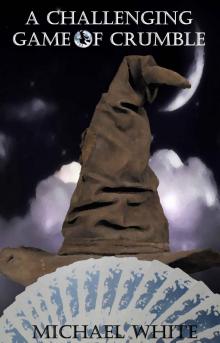 A Challenging Game of Crumble
A Challenging Game of Crumble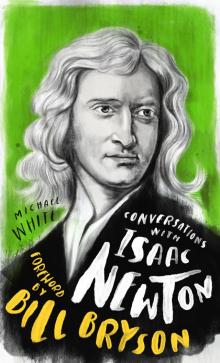 Conversations With Isaac Newton
Conversations With Isaac Newton The Complete Adventures of Victoria Neaves & Romney
The Complete Adventures of Victoria Neaves & Romney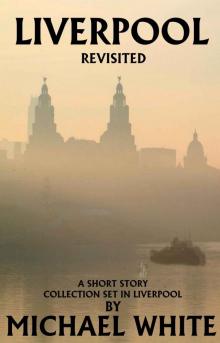 Liverpool Revisited
Liverpool Revisited Dad Comes to Visit
Dad Comes to Visit Lachmi Bai, Rani of Jhansi: The Jeanne D'Arc of India
Lachmi Bai, Rani of Jhansi: The Jeanne D'Arc of India Barf the Barbarian in Red Nail (The Chronicles of Barf the Barbarian Book 2)
Barf the Barbarian in Red Nail (The Chronicles of Barf the Barbarian Book 2) Equinox
Equinox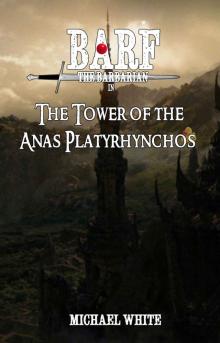 Barf the Barbarian in The Tower of the Anas Platyrhynchos (The Chronicles of Barf the Barbarian Book 1)
Barf the Barbarian in The Tower of the Anas Platyrhynchos (The Chronicles of Barf the Barbarian Book 1) The Medici secret
The Medici secret Jack Pendragon - 02 - Borgia Ring
Jack Pendragon - 02 - Borgia Ring The Art of Murder jp-3
The Art of Murder jp-3 Travels in Vermeer
Travels in Vermeer